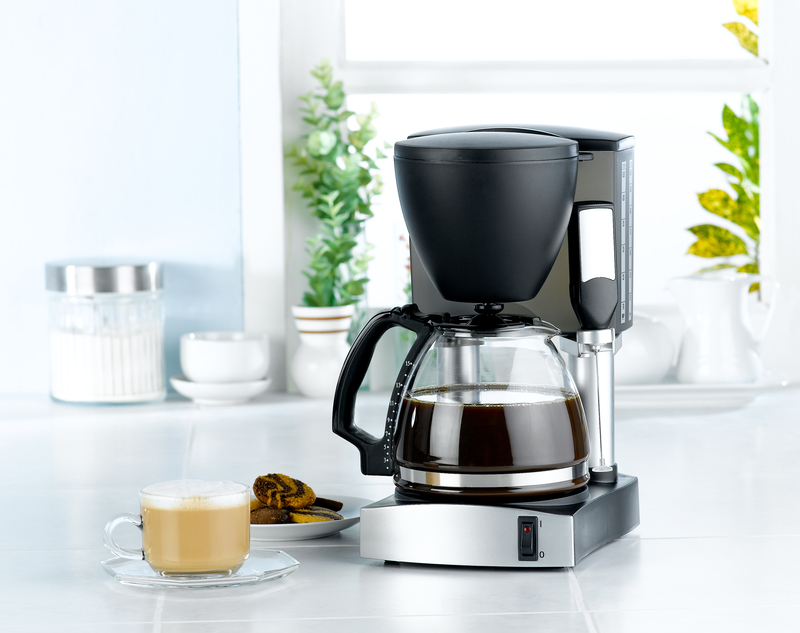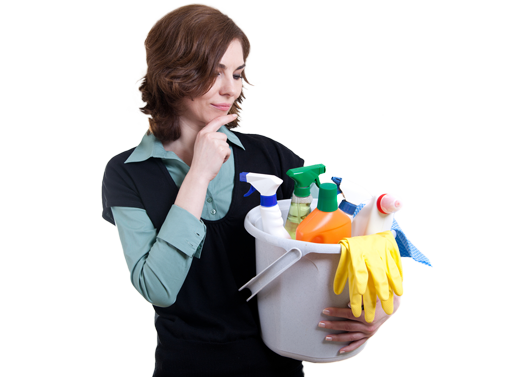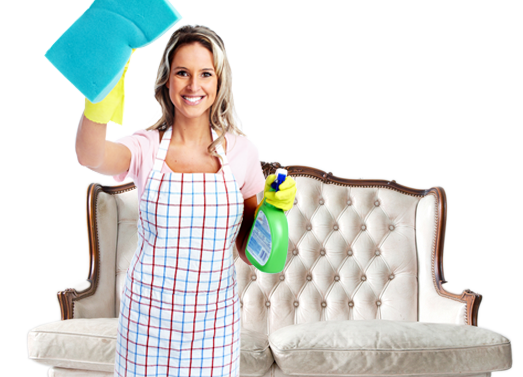Simple Techniques to Eradicate the Damp Smell in Your Home
Posted on 07/06/2025
Simple Techniques to Eradicate the Damp Smell in Your Home
A persistent damp smell in the home can be bothersome, embarrassing, and even hazardous to your health. Fortunately, there are effective and simple methods to remove, reduce, and prevent musty odors. This comprehensive guide will walk you through basic and advanced techniques to eliminate damp smells at home, improve air quality, and ensure a fresher living environment.

Understanding the Damp Smell: What Causes It?
The unpleasant musty odor that lingers in many homes is typically the result of excess moisture. Dampness can stem from:
- Poor ventilation
- Leaky pipes or a leaking roof
- Condensation issues
- Unresolved spills or flooding
- Wet clothes or towels left inside
- Damp basements or crawlspaces
- Mold and mildew growth
These factors create an environment where mold, mildew, and bacteria can flourish, leading to that distinctive damp smell.
Why Is It Important to Get Rid of Damp Smells?
Addressing the source of damp odors quickly is crucial for several reasons:
- Health Risks: Mold spores can trigger allergies, asthma, and respiratory issues.
- Unpleasant Living Conditions: A musty home feels uncomfortable and uninviting.
- Property Damage: Persistent moisture can deteriorate walls, floors, and furniture.
- Negative Impressions: A smelly home can deter guests or even affect property sales.
Simple Techniques to Remove Damp Odors from Your Home
1. Identify and Fix the Source of Moisture
This is the most important step in eradicating the damp smell. Without addressing the root cause, any attempts at masking odors will only be temporary. Consider the following actions:
- Inspect for leaks: Check under sinks, around toilets, basements, attics, and behind appliances for water leaks.
- Repair leaking pipes and roofing: Promptly fix any leaks to prevent dampness and mold from spreading.
- Seal windows and foundations: Use caulking or weather-stripping to seal gaps and cracks where moisture may enter.
2. Improve Ventilation
Insufficient airflow allows moisture to accumulate. To eliminate musty smells naturally:
- Open windows and doors: Airing out rooms helps dry out damp areas.
- Use exhaust fans: Install fans in bathrooms, kitchens, and laundry rooms.
- Move furniture: Keep a gap between walls and large furniture items to allow air circulation.
- Install vents: In attics or basements, proper ventilation is crucial to prevent damp build-up.
3. Use Dehumidifiers or Moisture Absorbers
Dehumidifiers are excellent for removing excess moisture from the air. For a quick fix for damp smell:
- Purchase a portable dehumidifier for areas like the bedroom, living room, or basement.
- For closets and small spaces, use moisture-absorbing products such as silica gel packs, activated charcoal, or calcium chloride crystals.
Tip: Empty and clean your dehumidifier regularly to prevent mold growth inside the device.
4. Wash and Dry Affected Fabrics Thoroughly
Fabrics tend to retain dampness and can perpetuate odor. To get rid of the musty smell in textiles:
- Wash curtains, bedding, rugs, and cushion covers: Use hot water if possible and add a cup of white vinegar to the washing machine to help neutralize odors.
- Dry completely: Hang fabrics outside in the sun or use a tumble dryer. Never store damp fabrics indoors.
- Clean soft furnishings: Steam clean sofas and washable upholstery or sprinkle with baking soda to absorb smells before vacuuming.
5. Deep Clean Hard Surfaces
Walls, floors, and tiles can harbor damp-related odors even after visible water is gone.
- Clean with vinegar and water: Mix equal parts of white vinegar and water to wipe surfaces. Vinegar is a natural deodorizer and mold killer.
- Use baking soda: Sprinkle on carpets or floors, leave for a few hours, then vacuum to neutralize odors.
- Disinfect: In bathrooms and kitchens, use a mold and mildew cleaner for tiles, grout, and sinks.
6. Treat and Prevent Mold and Mildew
For lasting results and to eliminate dampness at its source:
- Scrub moldy areas: Use a solution of one part bleach to four parts water (wear gloves and ensure ventilation).
- Dispose of heavily affected items: Throw away items that cannot be cleaned, including old carpets and water-damaged drywall.
- Apply anti-mold paint: In problem areas, consider using mold-resistant paint.
7. Maintain Regular Cleaning
Don't let musty odors return:
- Vacuum and dust frequently: This removes spores and dust that can trap moisture.
- Address spills promptly: Clean and dry any accidental spills or leaks immediately.
- Check hidden areas: Routinely inspect under furniture, in closets, and behind appliances for signs of dampness or mold.
Natural Remedies to Get Rid of the Musty Smell
Harnessing the Power of Baking Soda and Vinegar
- Baking soda: Place open bowls of baking soda in rooms, closets, or affected areas to passively absorb odors over time.
- Vinegar: Set out bowls of white vinegar overnight to neutralize lingering smells in the air.
Lemon and Essential Oils
- Lemon peels: The natural freshness of lemon helps mask odors. Simmer lemon slices in water or leave peels out in a bowl.
- Essential oils: Add a few drops of tea tree, eucalyptus, or lavender oil to a spray bottle with water and use as an air freshener.
Houseplants that Help Control Humidity
Certain houseplants naturally absorb moisture and help purify indoor air:
- Boston fern
- Peace lily
- English ivy
- Spider plant
*Care for plants properly to prevent overwatering, which can contribute to more dampness.
Preventative Tips to Keep Damp Smells Away
Avoid Drying Clothes Indoors
Hang laundry outside whenever possible. If you must dry indoors, use a well-ventilated area or a dryer with an external vent.
Use Crystals and Absorbents in Closed Spaces
- Place moisture-absorbing crystals or desiccant packs inside wardrobes and storage boxes.
- Charcoal bags are an excellent eco-friendly option for continued odor control.
Keep Gutters and Drains Clear
Regularly clean gutters and downspouts to ensure water does not collect near your home's foundation, a common cause of rising damp and mold development.
Routine Maintenance Checks
- Inspect your roof, basement, pipes, and water appliances for leaks.
- Schedule annual HVAC maintenance to keep air moving properly in your home.
When to Consider Professional Help
If you've followed these easy damp smell removal techniques but the odor continues, it might indicate a more serious issue such as significant mold colonization inside walls, under floors, or in HVAC systems. In these situations, professional damp proofing, mold remediation, or plumbing services may be necessary.
Warning Signs That Need a Professional
- Persistent musty smell despite cleaning
- Visible black or green mold on walls or ceilings
- Condensation on windows or walls year-round
- Health symptoms (increased allergies, breathing problems, chronic coughing)
- Extensive water damage after flooding

FAQs: Common Concerns About Damp Smells in Homes
1. What's the fastest way to get rid of damp smell?
Increase ventilation, identify and dry out the source of moisture, then use an odor absorber like baking soda or charcoal for rapid relief.
2. Does painting over mold fix the smell?
No. Painting over mold only masks the problem temporarily. The source moisture and spores must be removed first.
3. Are air fresheners effective for removing musty odors?
Air fresheners only cover up the smell; they don't address the underlying cause. Use them in conjunction with other odor-eliminating methods.
4. Is the damp smell harmful?
While not always immediately dangerous, a persistent damp or moldy odor indicates mold or mildew growth, which can lead to respiratory problems, allergies, and aggravate health issues over time.
5. How do I know if my home has a serious damp problem?
- Continual musty odor that does not improve
- Visible mold patches, damp streaks, or bubbling paint
- Water stains on walls or ceilings
- Health symptoms appearing or worsening indoors
Final Thoughts: Enjoy a Fresher, Healthier Home
Getting rid of a damp smell in your home is not just about comfort--it's about protecting your property, your health, and your peace of mind. By identifying the source, improving ventilation, cleaning thoroughly, and adopting preventative measures, you can keep your living space fresh, inviting, and free from musty odors year-round. Start with these simple damp smell removal techniques today and breathe easier tomorrow!




